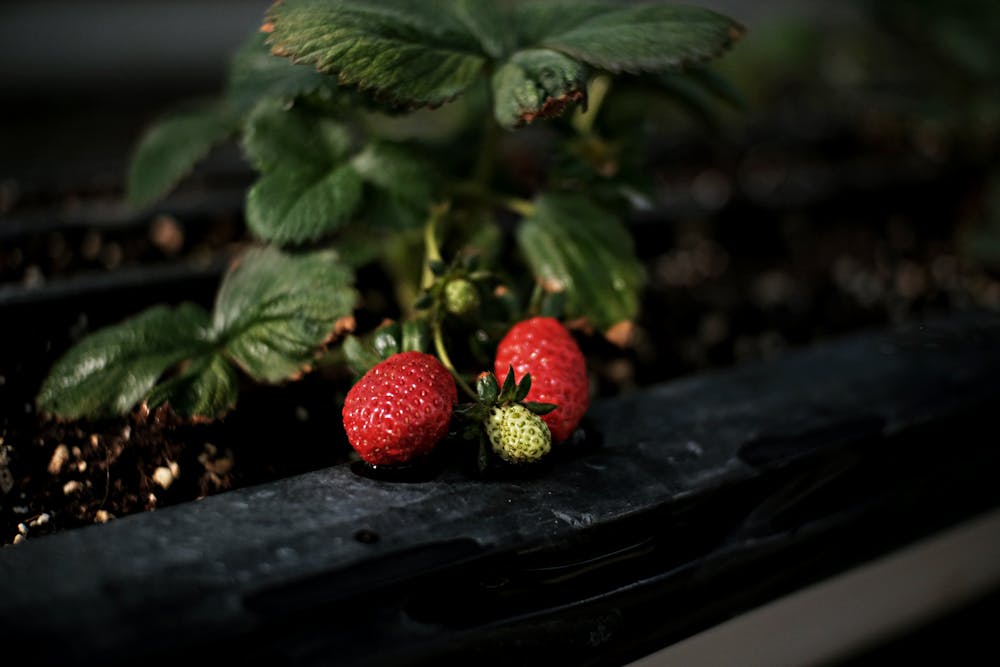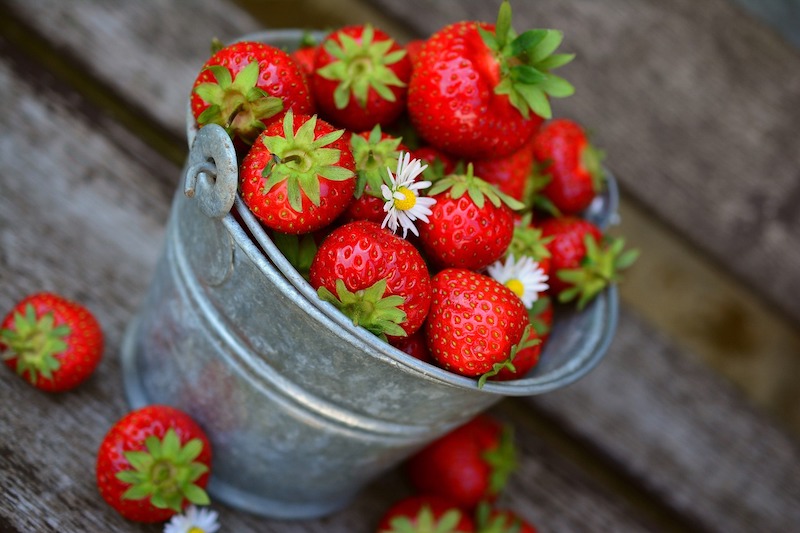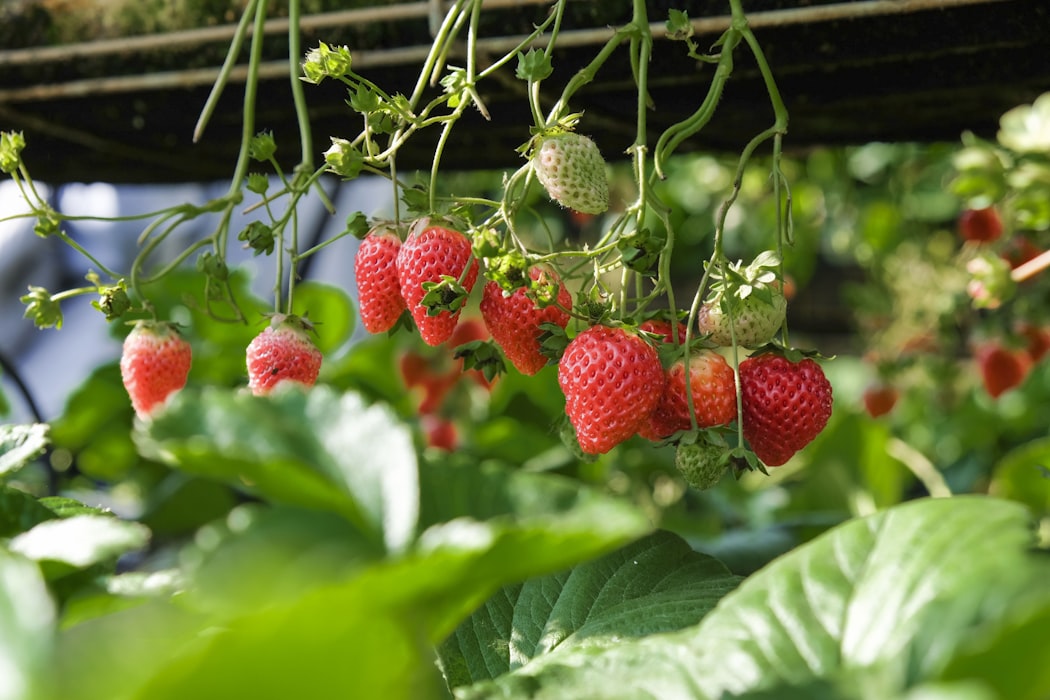Need tips for growing strawberries successfully in your garden? Growing strawberries can be intimidating, especially when you've difficulties in the past. But check out these top tips for growing strawberries and you will likely hit a home run this time around!
Nifty Tips For Growing Strawberries Like A Pro
Strawberries are widely available in the grocery store, but I found out that strawberries not only made it to the list of the dirty dozen, but made it to the top. Apparently, strawberries are grown using inorganic fertilizers and pesticides which pose threats to our health.
After finding this out, I started growing strawberries right away. If you want your strawberries fresh, clean, and organic, start planting now. These practical tips and tricks for growing strawberries could be just what you need for a bountiful harvest!
Tip 1. Sun And Space
Growing strawberries isn't actually difficult but you definitely want to get on the good side of the sun. An area where strawberries can get full sun is best to grow strawberries in. Try and grow strawberries in locations that benefit from long sunny days and cool nights. Giving your strawberries space in their plant beds is also important to allow air to circulate around the plants.
Tip 2. Start Early, Harvest Many

Take note, you will not get a huge harvest first year you grow strawberries, but expect loads the following year. While growing strawberries is usually done around June, it's not bad to start earlier. Cold-stored strawberry runners can be planted from the middle of spring to early summer. You can expect the first fruit in 60 days.
Tip 3. Soil Is Everything
As with any other plants, soil is the key to growing successfully. Strawberries grow best in slightly alkaline and sandy soil with lots of organic matter. Good drainage is also important so you can amend or repair your soil as needed. For an acidic soil, you can add lime or fertilize with coffee grounds to amend the soil pH.
Tip 4. Raise Them Up
Growing strawberries in raised beds or in containers is practical and highly recommended by expert growers. Not only does it allow you to grow strawberries in a limited space but it allows you to grow strawberries earlier. Raised beds and containers warm up faster during spring and cool down slower during fall.
Tip 5. Protect Your Strawberries
Strawberries won't only be attractive to you but to potential pests as well, like birds and insects. Protect your plants from insect pests with companion planting and with a physical barrier from larger pests like birds. You can make this easy homemade greenhouse to protect your plants super inexpensively. You can also protect strawberries from weeds, by using organic mulch. Mulching will also protect the fruit by being a sort of protection from direct ground contact.
Tip 6. Water, Water, Water
It's important that your soil has good drainage with all the watering that strawberries need. You can even set up a soaker hose watering system so your strawberries are regularly watered but not waterlogged. Strawberries are thirsty fruits, and lack of water can lead to stressed plants and deformed fruits. Watering strawberries regularly will give you sweeter and larger fruits.
Tip 7. Dealing With Runners
Runners are the extended growth in strawberry plants which can be both beneficial and harmful to your plant. However, more strawberries can be propagated through these runners, and it would be a waste to take them out. Runners grow in most varieties but they won't be helpful in boosting immature plant growth. So cut off runners during the first year of your strawberries and grow more strawberries from the runners the following year.
Tip 8. Beware Of Solanum Plants
Borage is probably the best companion plant for strawberries. Not only does it drive pests away but it also attracts beneficial insects with its flowers. Mint and allium are also good companion plants for strawberries. While these plants are good for strawberries, there are some which can be damaging to them.
Strawberries are vulnerable to the root rot fungus Verticillium. This fungus is carried by plants from the nightshade or solanum family. Avoid growing strawberries in plant beds where pepper, tomatoes, eggplant, potatoes, and chrysanthemums have been grown in the last four years.
Tip 9. When Flowers Appear
Strawberry flowers are lovely, you'll surely be dazzled by them when they start appearing. But picking those first flowers will actually do your plant a lot of good. This will evidently boost the overall growth by establishing the plant first. You would also do well to apply a complete organic fertilizer rich in potash in this critical stage of your plant growth.
Although strawberries are self-pollinating, inviting bees over to assist in pollination can be beneficial. You can also manually assist in pollination, especially if you are growing strawberries indoors where pollinators are absent. Take out a small paint brush and gently brush off the pollen from flower to another.
Tip 10. Learn About Strawberry Varieties
Everbearing varieties aren't really ever-bearing, so learning about strawberry varieties can help you pick one that's right for you. When choosing a strawberry variety, taking them at face value could be a huge mistake. Different varieties call for different growing techniques and environments.
Take these tips and grow strawberries with this guide in this video:
There you have it, green thumbs, my top 10 tips for growing strawberries like an expert. Nothing tastes better than sun-ripened and freshly picked strawberries. And it's even better knowing that you grew them yourself. You can also try your fresh strawberries in this delectable blueberry and strawberry recipe and find out how fresh is best!
Do you have any tips and tricks of your own? I'd be delighted to hear all about it in the comments section below!






